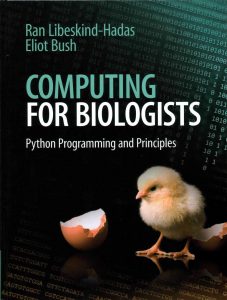Computing for biologists
AUTHOR Libeskind-Hadas, Ran
CALL NO QH324.2 L695c 2014
IMPRINT Cambridge : Cambridge University Press, c2014
Computing is revolutionizing the practice of biology. This book, which assumes no prior computing experience, provides students with the tools to write their own Python programs and to understand fundamental concepts in computational biology and bioinformatics. Each major part of the book begins with a compelling biological question, followed by the algorithmic ideas and programming tools necessary to explore it: the origins of pathogenicity are examined using gene finding, the evolutionary history of sex determination systems is studied using sequence alignment, and the origin of modern humans is addressed using phylogenetic methods. In addition to providing general programming skills, this book explores the design of efficient algorithms, simulation, NP-hardness, and the maximum likelihood method, among other key concepts and methods. Easy-to-read and designed to equip students with the skills to write programs for solving a range of biological problems, the book is accompanied by numerous programming exercises, available at www.cs.hmc.edu/CFB.
- Easy-to-read and designed specifically for students in the life sciences, assuming little or no computing background
- Teaches general and widely applicable Python (both versions 2 and 3) programming skills along with computational methods for solving real biological problems
- Algorithms covered include gene finding, sequence alignment and phylogenetic methods, with an accompanying website providing a range of practical programming exercises




